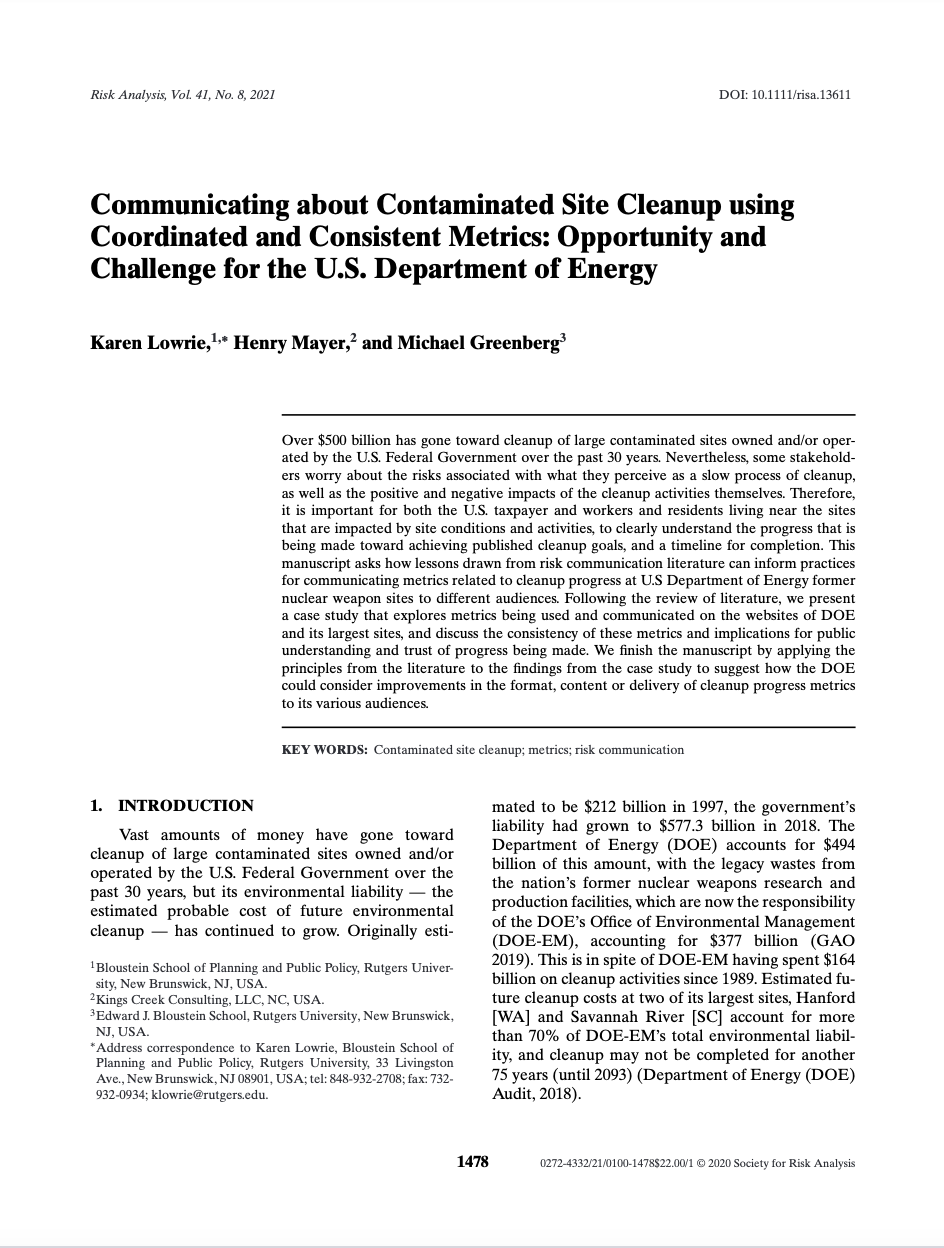Over $500 billion has gone toward cleanup of large contaminated sites owned and/or operated by the U.S. Federal Government over the past 30 years. Nevertheless, some stakeholders worry about the risks associated with what they perceive as a slow process of cleanup, as well as the positive and negative impacts of the cleanup activities themselves. Therefore, it is important for both the U.S. taxpayer and workers and residents living near the sites that are impacted by site conditions and activities, to clearly understand the progress that is being made toward achieving published cleanup goals, and a timeline for completion. This manuscript asks how lessons drawn from risk communication literature can inform practices for communicating metrics related to cleanup progress at U.S Department of Energy former nuclear weapon sites to different audiences. Following the review of literature, we present a case study that explores metrics being used and communicated on the websites of DOE and its largest sites, and discuss the consistency of these metrics and implications for public understanding and trust of progress being made. We finish the manuscript by applying the principles from the literature to the findings from the case study to suggest how the DOE could consider improvements in the format, content or delivery of cleanup progress metrics to its various audiences.
Communicating about Contaminated Site Cleanup using Coordinated and Consistent Metrics
Citation:
Lowrie, K., Mayer, H. and Greenberg, M. (2020), Communicating about Contaminated Site Cleanup using Coordinated and Consistent Metrics: Opportunity and Challenge for the U.S. Department of Energy. Risk Analysis.
